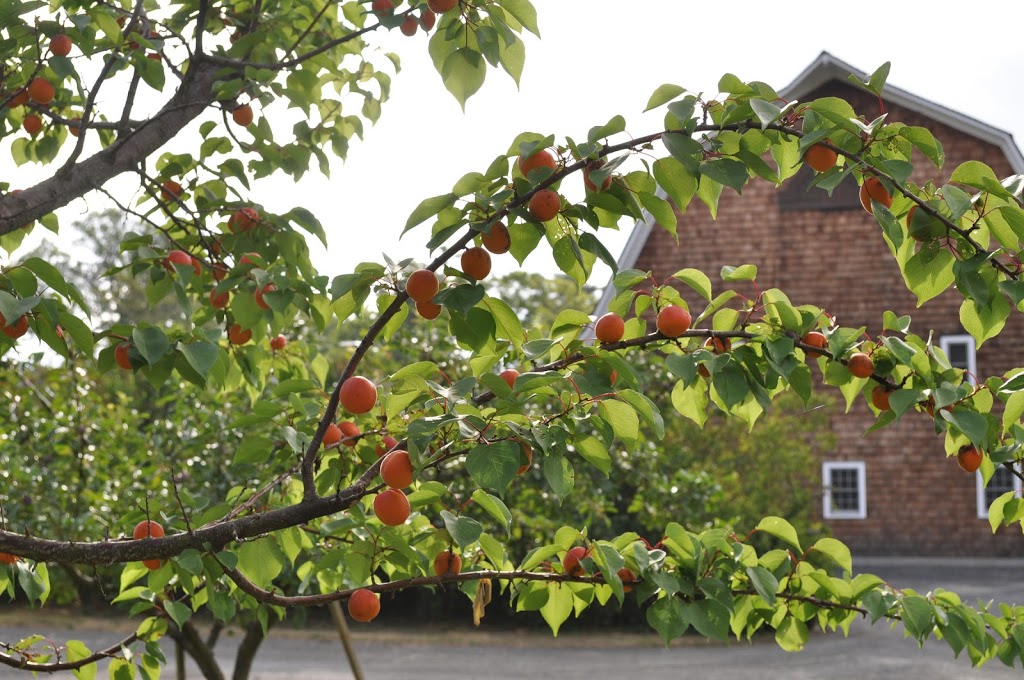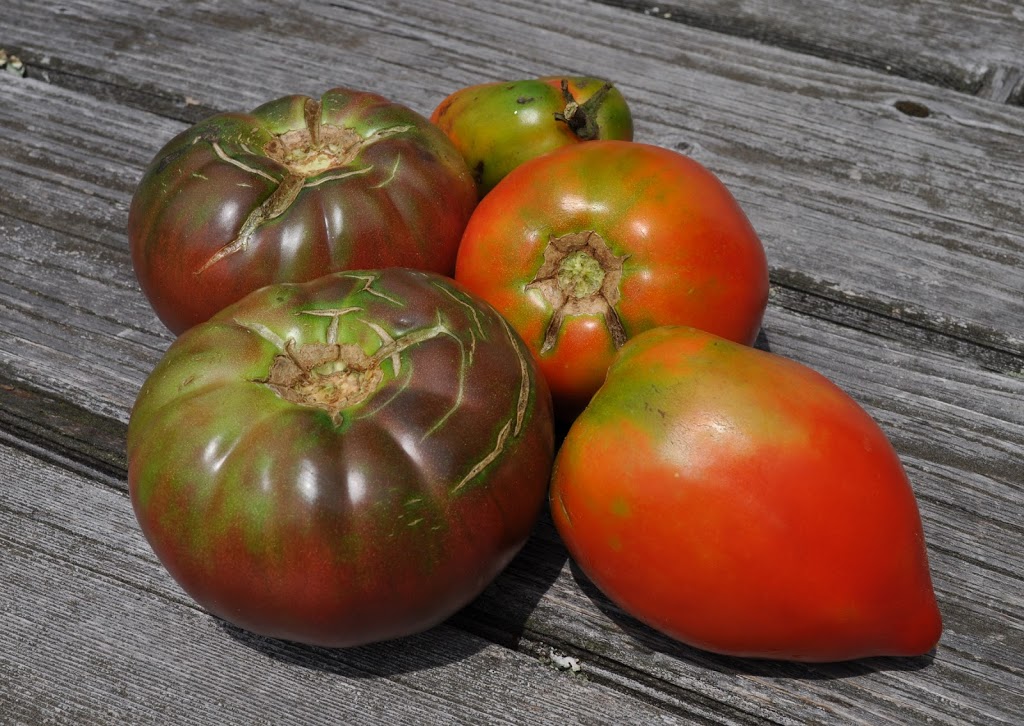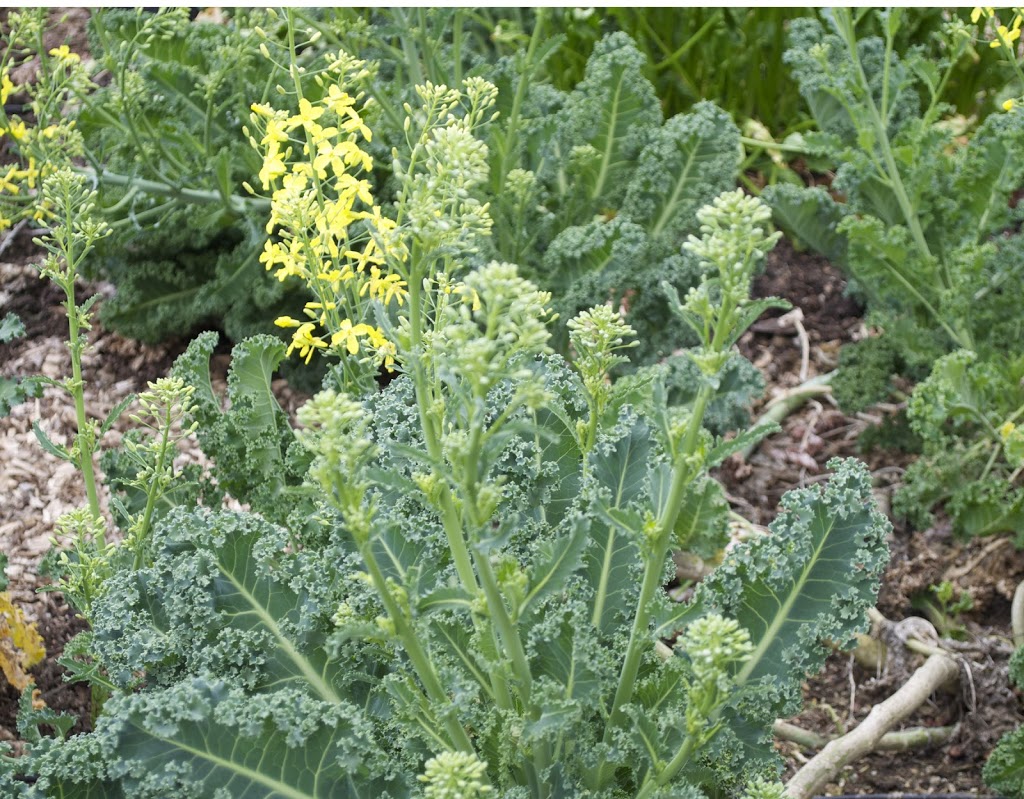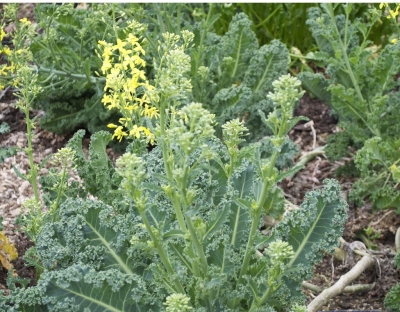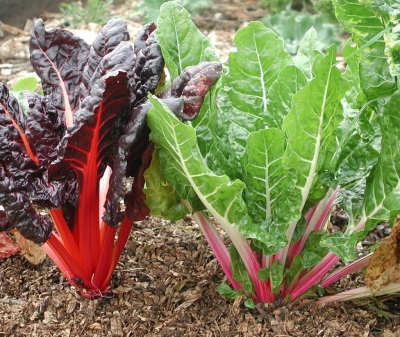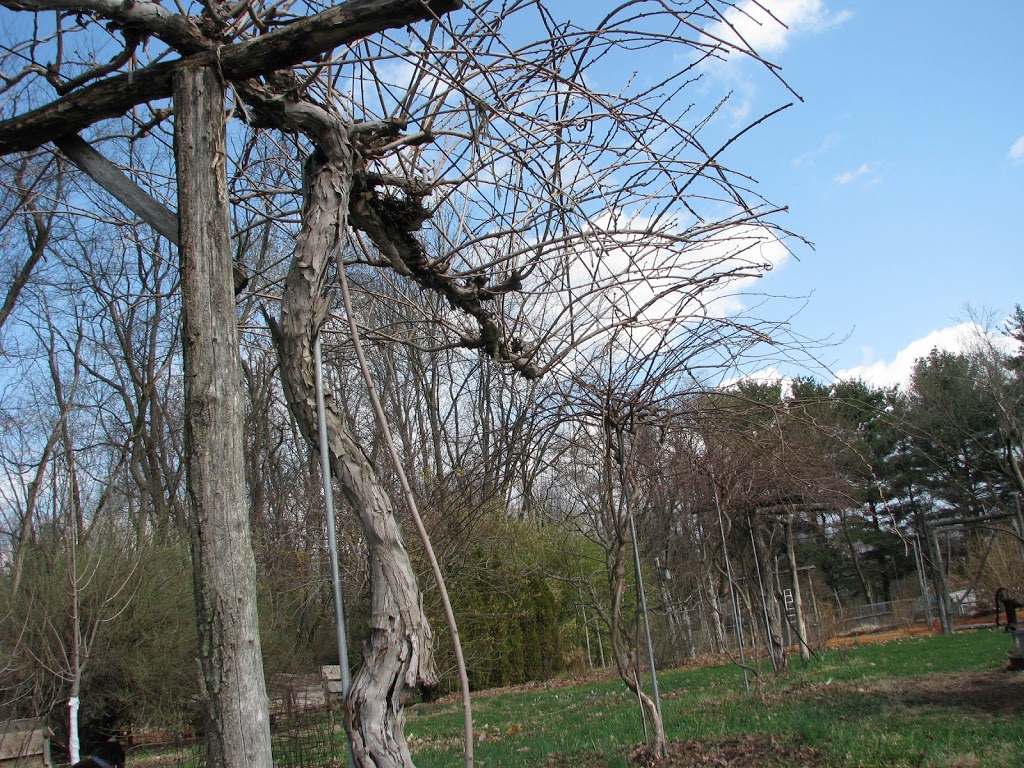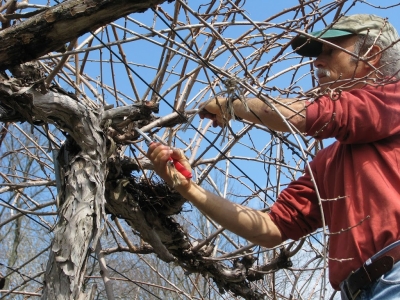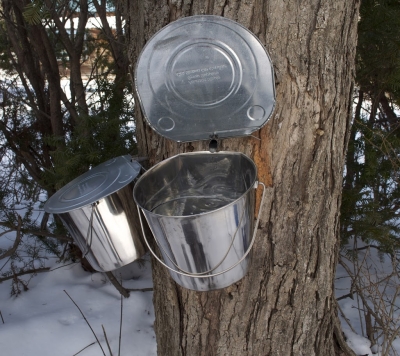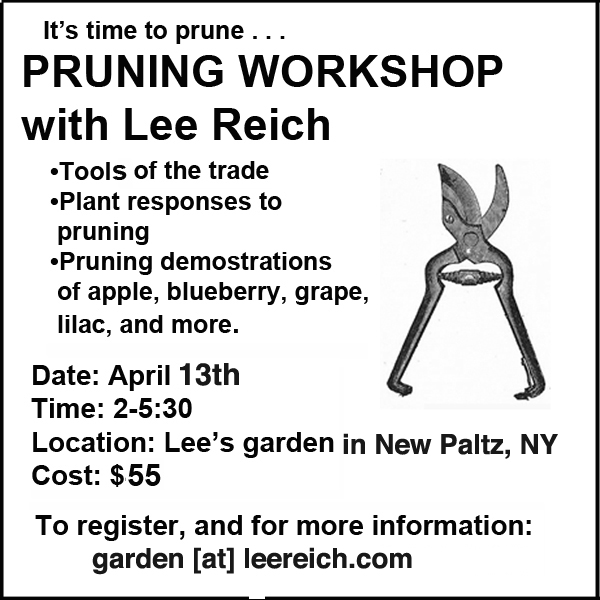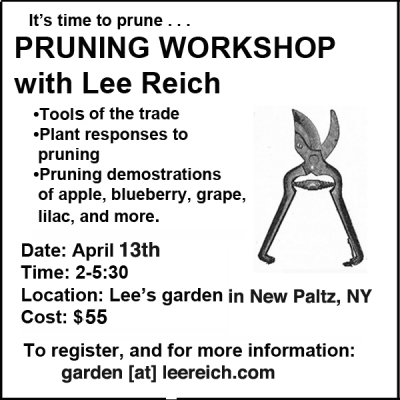Nuts for Fruits
/8 Comments/in /by Lee A. Reich |
| My apricot hope for the future. |
disease such as ominous-sounding, and truly debilitating, valsa canker. Trees typically die either quickly or slowly.
 |
| My friend Lev with his apricot trees |
 |
| My “citrus” plantation. |
restrain myself realizing that the plant might survive but would never become a majestic specimen the tree is meant to be. Citrus? I resign myself to growing some citrus in pots, indoors in winter and outdoors in summer.
Tomato Sowing, and More
/7 Comments/in /by Lee A. Reich |
| Two great tomatoes: Cherokee Purple & Amish Paste |
uniform red color. Or tomatoes that don’t ripen to perfectly round orbs. I also happen to like dark colored — so-called “black” — varieties. You could almost say that the uglier the tomato (by commercial standards) the better the flavor. Which is not to say that every tomato variety bearing ugly fruits is great-tasting; but it’s a start.
 |
| Some of last year’s tomatoes |
cooked and fresh), Rose de Berne, Valencia (orange fruit), and Nepal. Also two cherry tomatoes, Sungold and Gardener’s Delight. The latter was my favorite decades ago and I’m curious now how it compares with the incomparable Sungold.
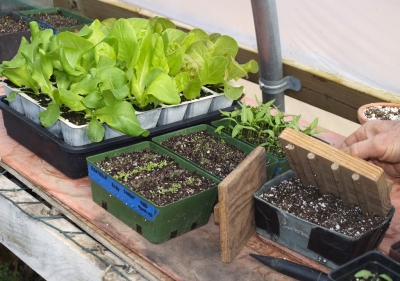 |
| A lot of seedlings in a little space. |
into a waiting hole I’ve dibbled with my cone shaped “dibbler.” As each seedling is in place I tuck potting soil in around its roots. Without delay, once a tray of seedlings has been pricked out, I spray a gentle but thorough mist of water to moisten the soil and settle the little sprouts into place without knocking them down.
Tales of Kale
/4 Comments/in /by Lee A. ReichSeakale is a salt-tolerant plant native to coastal regions of northern Europe, and it was in those regions that it was first moved into gardens for cultivation as a vegetable. Young shoots need to be blanched (grown in the dark) — by being covered with an upturned clay flowerpot, for example — to make them palatable. The blanched shoots are very tender, so you might never see them in markets. They should make a nice garden or farmden vegetable, though.
growth, longevity, flavor, hardiness, and nutrition. Seakale beet, as it is known in Britain; known as Swiss chard here. I plant chard just as I do kale, except less of it because it is less nutritious than kale (high oxalate concentration limits its availability of calcium), slightly less cold-hardy, and I happen not to like its flavor as much.
Pruning, Not Too Late
/7 Comments/in Pruning/by Lee A. Reich
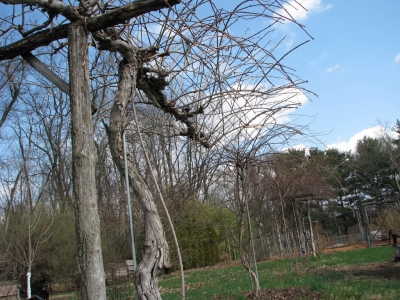 |
| Kiwi, before pruning |
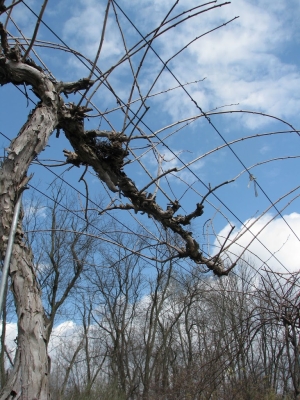 |
| Kiwi, after pruning |
Philahortica & Yet Another Giveaway!!
/35 Comments/in /by Lee A. Reich
 |
| Weeping cherries, Bryn Mawr, PA |
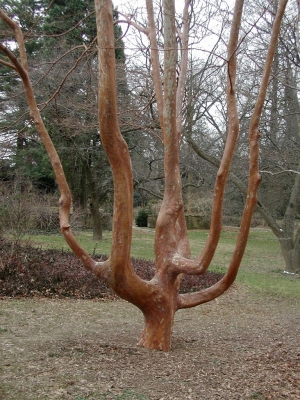 |
| Stewartia monophylla at the Barnes Foundation, PA |
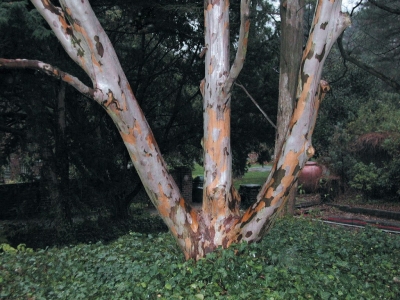 |
| Stewartia japonica |
 |
| Witchhazel, here at the farmden |
Write in your heirloom favorites soon . . . the giveaway (see below) will end Wednesday, March 27th at 1 pm.
A Giveaway, Dragons, Seedlings, and Aromas
/27 Comments/in /by Lee A. Reich
And now for the giveaway: A “High Mowing” cap and their boxed set of seeds for heirloom vegetable lovers. The box includes packets from such old-time favorites as Brandywine tomato, Red Salad Bowl lettuce, Detroit Dark Red Beet, Red Russian Kale, and others. To enter this giveaway, in the “Comments” box below tell us about some of your favorite heirloom vegetables. Winner of both the hat and the box of seeds will be selected randomly and contacted for mailing by email.
Here, then, is my schedule for sowing and planting some vegetables (after June 1, all plantings are outdoors):
What’s New, Or Going to Be
/3 Comments/in /by Lee A. Reich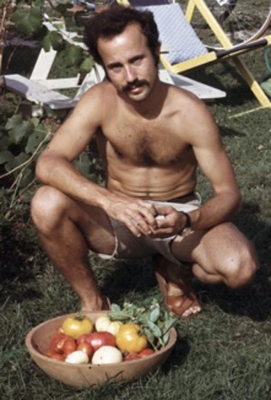 |
| Some white tomatoes, grown years ago |
Two or three people have already asked me, “Are you growing anything special this year?” Each time I had to stop and think: Am I? Then I feel, yes, I should be growing something new each year. Then, on the other hand, I feel, what with the vagaries of the weather and pest problems, that it’s interesting enough just to grow every year what I’ve grown in previous years. Reinforcing that last thought is a quote from Charles Dudley Warner (My Summer in a Garden, 1870): “I have seen gardens which were all experiment, given over to every new thing, and which produced little or nothing to the owners, except the pleasure of expectation.”
 |
| Apricots, in my future — I hope. |
Another “new” plant for this year is honeyberry (Lonicera edulis), sometimes called edible blue honeysuckle. This is another plant I grew many years ago. It performed poorly because of the poor care I gave it which was mostly because of the poor flavor of the one berry I tasted. But honeyberry is a new fruit, in the same place, development-wise, as the apple might have been 2,000 years ago. New varieties have come down the pike and I’m ready to try these newbies.


